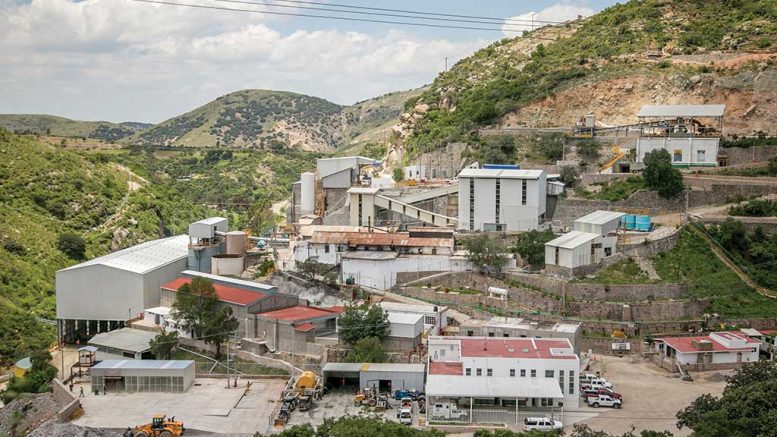The following is an edited release by the Washington, D.C.-based Silver Institute on silver market trends in 2018. Visit www.silverinstitute.org for more information.
Of all the metals in the periodic table, silver enjoys one of the most versatile landscapes, with its uses found in a variety of applications. Silver’s unrivalled characteristics serve many industrial products, while its weight and neutral colour make it popular in jewellery that suits many occasions. As a precious metal, silver serves as a store of value and can provide stability against the cycles of economic adversity. As such, factors influencing the silver market range from developments in the industrial and jewellery sectors to changes in the macroeconomic sphere that affect investor sentiment.
With this in mind, the Silver Institute provides the following insights on 2018 market trends.
Silver demand
Silver demand from industrial applications — the largest component of silver offtake, representing 60% in 2017 — could continue to grow this year. Due to silver’s unrivalled electrical conductivity, it plays a vital role in major industry sectors that move towards increased electrification, such as automotive. Although silver is used in small quantities in some applications, its diversity is large, and the rising volumes of applications could positively impact silver consumption from industrial products this year.
The strong increase in demand for small- and large-scale solar panels across the globe has boosted the demand for silver in photovoltaic applications in recent years, reaching an estimated 92 million oz. in 2017. We expect growth to continue this year and set another record for silver demand, driven by large-scale solar capacity additions and strong demand uptake from individual households, particularly in China.
Jewellery demand is expected to continue its steady increase in 2018, expanding consumption another 4%, after a 1% rise in 2017. Silver demand from the jewellery sector accounts for one-fifth of total silver demand. Many would argue that silver’s features lend themselves better than gold to fashionable jewellery because of silver’s colour neutrality, which provides more versatility for fashion-conscious consumers.
Coin demand almost halved to 73 million oz. in 2017. Much of the weakness concentrated in the U.S., where a buoyant stock market and parabolic increases in cryptocurrencies diverted capital away from physical precious metals. With equity and bonds in “expensive” territory and bitcoin’s stratospheric increase taking a breather in the beginning of 2018, we expect investment to flow back into precious metals, benefitting silver bar and coin demand this year.
Silver exchange-traded product (ETP) holdings achieved a record high at 670 million oz. at the end of 2017. Since their introduction in 2002, silver ETPs have recorded a small decline in total annual holdings only twice, indicating the stickiness of their nature among investors (this is in part since a relatively high proportion of silver ETP investors are individuals rather than institutions). Although growth has been somewhat stable since 2012, drawdowns of silver ETPs are far and few between. We expect ETP holdings to rise 3% this year.
Indian silver imports reported a strong year in 2017, almost doubling to 183 million oz., compared to the previous year. The increase is a combination of healthy jewellery demand and a shift from business conducted previously in cash to more formal channels. The implementation of a goods and services tax in India has had a positive effect on that development. Indeed, silver demand from jewellery, silverware, coins and medallion retailers — who prefer a more transparent business model — substantially rose last year in India. In 2018 we expect silver demand from jewellery fabricators to stay strong, pushing imports to 180 million ounces.
Silver supply
Global mine supply fell 1% in 2016 — the first annual decline after 14 years of consecutive growth. In 2017 mine output could contract another 2% to 870 million ounces. Production disruptions out of South America, along with a decline in capital expenses among the primary producers in the past five years, could constrain output again this year. But the strong recovery in base metal prices will support output in 2018, particularly from by-product producers capitalizing on the trend.
Silver generated from scrap supply improved slightly last year on stronger recycling waste from manufacturing. Scrap supply has dropped since 2011, due to a contracting pool of near-market silverware, jewellery and coins. Scrap could stabilize around 150 million oz. this year, which equates to 15% of total supply.
Silver market balance
The silver market balance (total supply less total demand) could swing into a slight market deficit again this year, with both supply and demand reaching above 1 billion ounces. Silver from above-ground stocks will have to be drawn down to serve the shortfall. This will be a welcome development, as above-ground stocks rose 9% last year in the face of weak physical demand from the U.S. and Asia.
Silver price
The silver price fell 0.5% last year to an average US$17.05 per oz. This year we expect the silver price to see a volatile ride. Short covering in the early 2018 has already propelled the price above last year’s average.
On a ratio with gold — which is at 72 — silver has plenty of room to improve and migrate towards its long-term average of 64.
With physical gold investment likely to be robust via risk-hedging, silver should benefit by proxy, given the propensity of professional speculators to leverage gold exposure through silver, and retail investors to buy silver instead of gold, if they cannot afford the latter.






Be the first to comment on "Facts ‘n’ Figures: Silver market poised for eventful year"